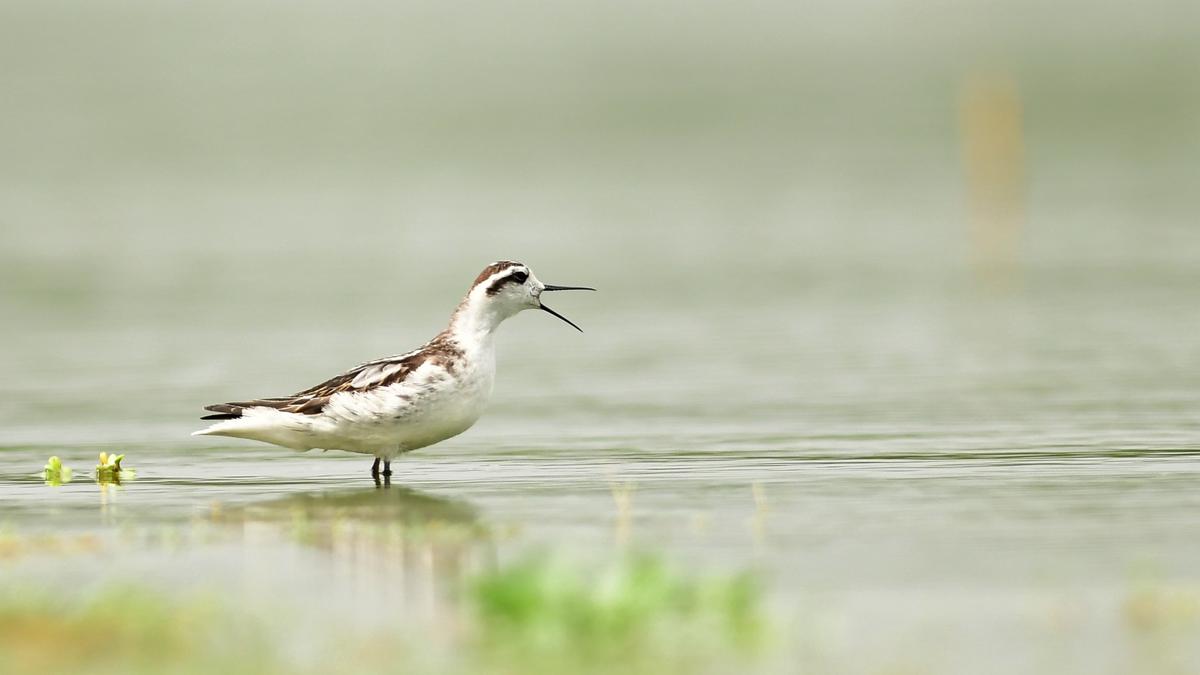Red-Necked Phalarope

- 24 Sep 2025
In News:
In a notable development for ornithology and biodiversity conservation, the Red-necked Phalarope (Phalaropuslobatus), a rare migratory shorebird, has been sighted for the first time at the Nanjarayan Bird Sanctuary near Tiruppur, Tamil Nadu.
About the Red-Necked Phalarope
The Red-necked Phalarope is a small, migratory wader renowned for its unique feeding behavior and striking breeding plumage.
- Distinctive Feeding Behavior:It is known for its characteristic habit of spinning rapidly in circles on the water surface to stir up small invertebrates and plankton, which it then feeds upon.
- Physical Features:During the breeding season, the bird exhibits chestnut-red plumage extending from behind the ear to the sides of the neck — a feature that gives it its name.
Unusually among birds, the female is more brightly coloured than the male, and the species displays polyandrous behaviour (females mate with multiple males), with males incubating the eggs and caring for the chicks.
Distribution and Habitat
The Red-necked Phalarope has a circumpolar distribution, breeding in boreal and tundra zones between 60° and 70° latitude, across regions such as the Arctic coasts, Aleutian Islands, and northern Britain.
- During migration and the non-breeding season, it spends much of its time at sea, especially across:
- The Arabian Sea,
- Waters off central-west South America, and
- The central Indonesian to western Melanesian regions.
The recent sighting at Nanjarayan Bird Sanctuary — a vital inland wetland ecosystem — highlights the site’s growing importance as a stopover for migratory shorebirds along the Central Asian Flyway.
Conservation Status
- IUCN Red List:Least Concern
Despite being widespread globally, localized population declines have been observed due to habitat degradation, pollution, and climate-induced changes in migratory routes.
Red-necked Phalarope (The Hindu)
- 20 Sep 2023
What is the News ?
A Red-necked phalarope (Phalaropus lobatus) was recently spotted by a group of birders who visited Kurichi Tank in Coimbatore.
Facts About:
- This is a relatively small shorebird renowned for its energetic spinning on the water surface to stir up small invertebrates.
- With a circumpolar distribution, it inhabits both boreal and tundra zones within the 60 to 70-degree latitude range.
- These phalaropes are commonly found along the coastlines of the Arctic Ocean, extending southward to the Aleutian Islands and northwestward to Britain.
- During the winter months, they predominantly reside in oceanic environments.
- In their non-breeding season, Red-Necked Phalaropes can be observed in areas ranging from central-west South America to the Arabian Sea, and from central Indonesia to western Melanesia.
- Conservation Status: IUCN Classification: Least Concern
